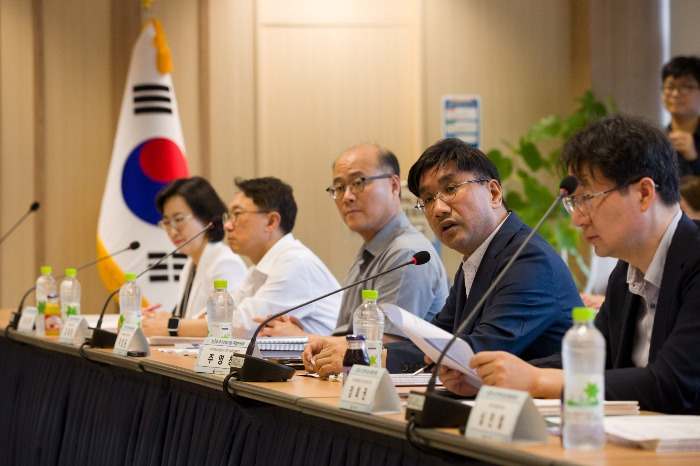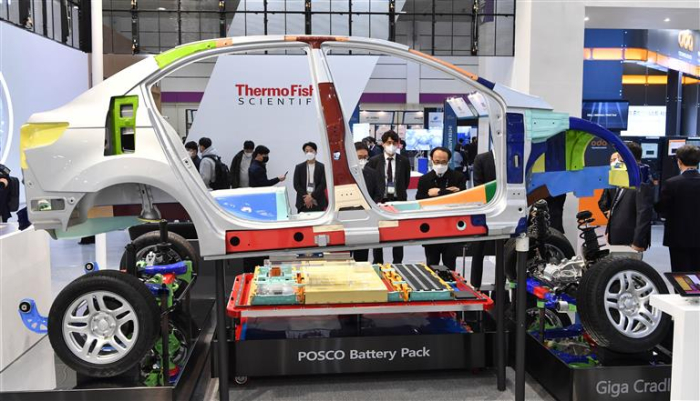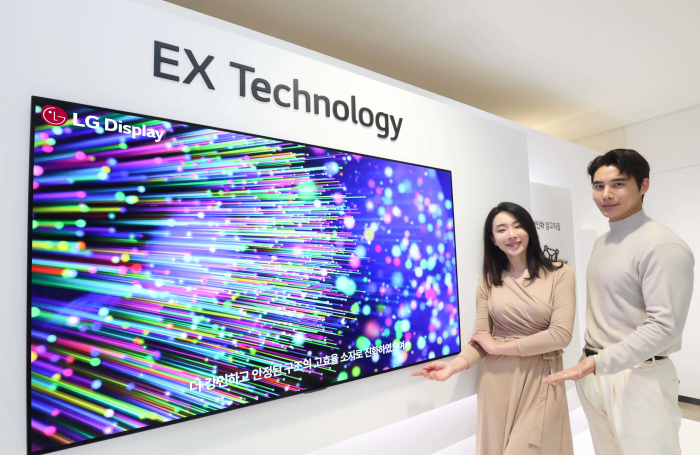Artificial intelligence
S.Korea to develop ultra-low-power AI chips by 2030
It aims to replace lithium-ion batteries with those made from sodium ions to reduce mineral imports
By Aug 29, 2023 (Gmt+09:00)
3
Min read
Most Read
LG Chem to sell water filter business to Glenwood PE for $692 million


Kyobo Life poised to buy Japan’s SBI Group-owned savings bank


KT&G eyes overseas M&A after rejecting activist fund's offer


StockX in merger talks with Naver’s online reseller Kream


Mirae Asset to be named Korea Post’s core real estate fund operator



South Korea will develop artificial intelligence (AI) chips by 2030 able to perform more than 10 trillion operations per second, while consuming very little electricity, with an aim to maintain its lead in the semiconductor industry, pivoting toward ultra-giant AI chips.
The Ministry of Science and ICT on Tuesday laid out roadmaps for its strategic technologies – semiconductors and displays, rechargeable batteries and advanced mobility – sectors in which the country's R&D spending must be focused by 2030 from an economic and security perspective.
The government will put joint efforts with companies and academia into developing ultra-low-power chips that perform 10 teraflops (TF) per watt. TF refers to 1 trillion operations per second.
The performance of 10 teraflops per watt means consuming one-millionth of the power used by AlphaGo in 2016, when it played a computerized Go match against former professional player Lee Sedol.
To develop the ultra-low-power chips, the government will create an AI semiconductor ecosystem, in which the Korea Advanced Institute of Science & Technology (KAIST), state-run research institutes, Samsung Electronics Co., SK Hynix Inc. and other technology companies will participate.
In 2024, it will spend 737.1 billion won ($560 million) and 594.3 billion won ($450 million) on R&D projects for AI and semiconductors, respectively.

Additionally, South Korea aims to secure 100% of the core technologies for ultra-fine chip fabrication processes below 3 nanometers.
To do so, the government will support domestic companies to team up with the world’s No. 1 semiconductor equipment maker Applied Materials Inc., the Netherlands-based ASML, a semiconductor lithography machine producer and Tokyo Electron Ltd.
The announcement was made after the third regular meeting of the Special Committee on National Strategic Technology, presided over by the science ministry.
BATTERIES, DISPLAYS
For the rechargeable battery industry, the government will focus on reducing imports of rare earth, for which the country wholly imports.
With competition heating up to secure rare earth and other strategic minerals embedded in lithium-ion batteries, the government aims to replace lithium with sodium ion, rich in reserves.

Sodium-ion batteries to be developed in South Korea will likely produce 220 watt-hours (Wh) per kilogram, or with an energy density of 220Wh per kg.
To further lower battery manufacturing costs, the country will encourage battery companies to develop high-manganese battery manufacturing technologies low in cobalt by 2030. Cobalt is more expensive than manganese.
The government will also sponsor the development of high-nickel cathodes and silicon anodes with an energy density of 350 Wh per kg.
For the display sector, South Korea will focus on developing new, original technologies based on new materials to hold back China’s ascent not only in the low-end LCD market, but also in the OLED sector.

To that end, it will prioritize commercializing stretchable display technologies.
LEVEL 4 AUTONOMOUS DRIVING
The government aims to develop Level 4 Plus autonomous driving technology, under which vehicles can self-drive even in unpredictable situations.
“This strategic roadmap will be used as a compass for the entire process of government R&D policy, investment, and evaluation,” said a science ministry official.
“Roadmaps for other national strategic technology fields such as quantum and aerospace will be announced later one by one.”
Write to Jin-Won Kim at Jin1@hankyung.com
Yeonhee Kim edited this article.
More to Read
-
 Artificial intelligenceNaver eyes global market with new LLM HyperCLOVA X
Artificial intelligenceNaver eyes global market with new LLM HyperCLOVA XAug 24, 2023 (Gmt+09:00)
4 Min read -

-
 Korean chipmakersAdvanced memory is strategic asset for Korea’s chip supremacy: Hwang
Korean chipmakersAdvanced memory is strategic asset for Korea’s chip supremacy: HwangAug 03, 2023 (Gmt+09:00)
3 Min read -
 Artificial intelligenceKT to build hyperscale AI cloud infrastructure
Artificial intelligenceKT to build hyperscale AI cloud infrastructureJun 28, 2023 (Gmt+09:00)
1 Min read -
 Artificial intelligenceKT to invest $5.4 bn by 2027 to develop AI platforms
Artificial intelligenceKT to invest $5.4 bn by 2027 to develop AI platformsJun 21, 2023 (Gmt+09:00)
2 Min read
Comment 0
LOG IN


